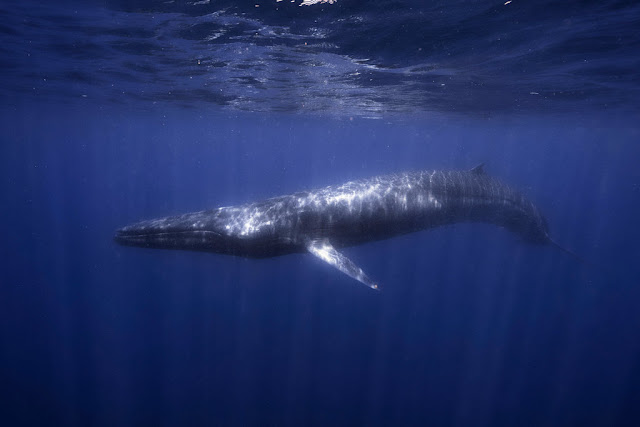Research Gate
Southern Ocean humpback whales are shifting to an earlier return migration, 25 July 2025:
Authors:
Rebecca A. Dunlop
Emma Gumley
Ella Holding McGrath
Michael Noad
ABSTRACT
The Southern Ocean ecosystem is undergoing unprecedented environmental changes, which have led to shifts in the primary food source of baleen whales, Antarctic krill. Additionally, many humpback whale populations have rebounded from near extirpation due to historical whaling, increasing pressure on now vulnerable krill populations. Since humpback whales rely on energy reserves built up during their feeding season to sustain them during migration, changes in their food supply are likely to influence their migration strategies. In this study, the timing of the ‘return to feeding grounds,’ or southern migration, of the eastern Australian humpback whale population was tracked over a 21-year period. Both land-based and acoustic surveys were used to estimate the timing of the migratory peak in southern Queensland, i.e., the week with the highest number of whales sighted or recorded. Land-based surveys recorded all whales, including females with newborn calves, while acoustic surveys recorded singing adult males. Both datasets revealed that the peak of the southern migration has shifted earlier by approximately three weeks from 2003 to 2024. Although this study does not establish causation, it highlights a strong correlation between changes in migratory timing and sea ice coverage in the whales’ Antarctic feeding grounds. The observed decline in sea ice area, combined with the large increase in the humpback whale population, are discussed as potential factors contributing to the shift in migratory timing.
The Australian east coast is one of three principal migration paths for whales travelling between Summer and Winter feeding and breeding grounds.
The Northern Rivers premier masthead expands on the subject.....
ECHO, 12 September 2025:
Decades of surveys show whale migration shift
 |
As we near the end of the 2025 humpback whale migration, both north and south, a University of Queensland survey has revealed the peak of the southern migration of humpback whales down the east Australian coast is now weeks earlier than it was 21 years ago, and a warming Southern Ocean may be the reason.
Associate Professor Rebecca Dunlop from UQ’s School of the Environment found the return migration from northern breeding grounds has shifted earlier by approximately three weeks.
‘Acoustic and visual surveys show the peak of the southern migration in 2003 was in early October but by 2024, we observed it was in the middle of September,’ said Dr Dunlop.
‘While migratory timing naturally fluctuates from year to year by about two weeks, since 2021 there has been a clear and sustained change.’
The cues for migration are not well understood but are likely to be influenced by ecological and environmental factors impacting summer feeding while in the Southern Ocean.
Sea ice and krill populations
‘A big factor is the connection between sea ice and krill populations.’
Apart from the odd temporary stopover, humpback whales do not eat during the winter months when they migrate to tropical and subtropical breeding grounds.
‘Whales likely time their migration to ensure their stay in Antarctic waters is long enough with adequate feed to build the fat and protein reserves needed to fuel their journey to and from the breeding grounds, as well as for reproductive activities,’ said Dr Dunlop.
‘The later years of this study coincide with a pronounced decline in sea ice coverage beyond usual annual fluctuations.’
‘Less sea ice, or a shorter ice season, means less algae which is crucial food for krill.’
‘Less available krill prior to the migration could be forcing the whales back to the feeding grounds earlier.’
Population grown from 300 to 40,000
The eastern Australian population of humpback whales has grown from only 300 in the 1960s after sustained hunting, to around 40,000.
‘We did consider if an earlier departure from the northern breeding grounds could be driven by crowding or even human activity in the Great Barrier Reef,’ said Dr Dunlop. ‘But while the whale population increased steadily over the 21 years of this study, a clear shift in migration timing did not occur until after 2021 when rising water temperatures driven by climate change affected sea ice coverage in the Antarctic oceans.’
This earlier return south is also being seen in other humpback populations – along Australia’s west coast and South America.
‘I am concerned at some point we may see a decline in birth rates because females won’t have the energy to support migrating north, giving birth and getting their calf back to the feeding grounds.’
A research project is underway to determine whether the timing of the migration north away from the feeding grounds has also shifted.
NOTE: My yellow highlighting in this post











